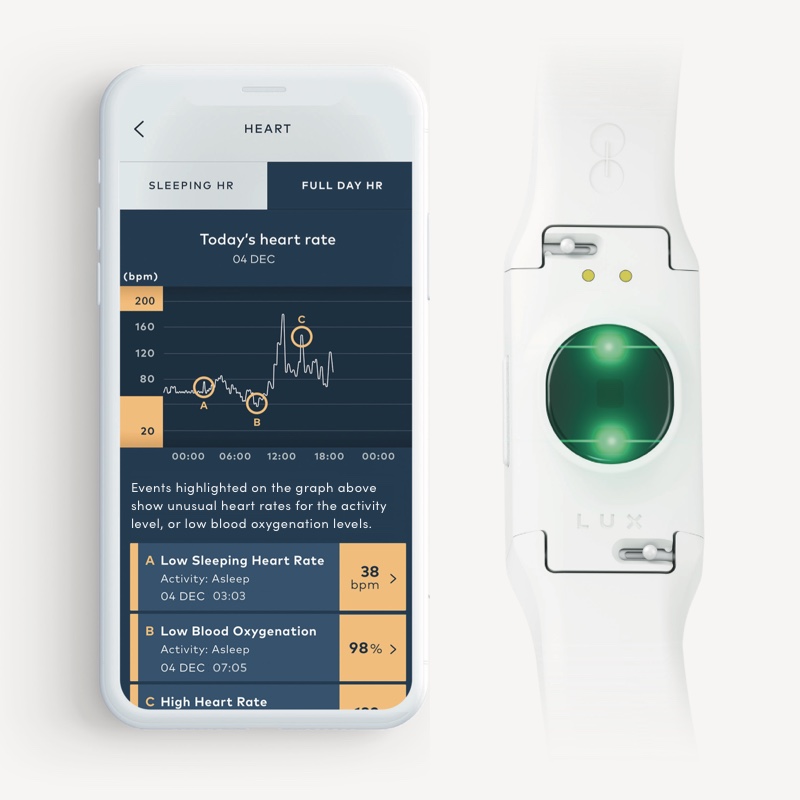LUX Health: Digital product and service design

Most people have little insight into what’s happening in their bodies and the potential significance of changing health patterns. With health screening often triggered either by noticeable illness or arbitrary time periods, it’s far too easy to miss the first signs of disease.
This poses a particular risk to the over 50s, whose long-anticipated ‘third age’ can be undermined by the effects of illnesses that could have been minimised, or even prevented, if detected earlier.
We were appointed as service and UX design partner for LUX, a startup working to provide people with a detailed understanding of their health and ultimately predict the onset of illness or disease. The LUX system combines a wristband and scales connected to an intuitive app.
What we did
We worked alongside the product team from initial concept through to production.
Initially, we conducted research to understand people’s behaviour, needs, attitudes and motivations around health monitoring. We explored how and why existing products and services such as Fitbit and Apple Health were meeting needs. We used the insight to prioritise features and functionality as well as messaging and commercial positioning.
We then worked iteratively conducting design sprints to prototype user journeys and screens, service architecture, content, features and functionality.
We conducted deep research into people’s understanding of data visualisation, prototyping and testing multiple ways to visualise sleep patterns, heart rate and blood pressure. We also looked at onboarding first time users which included work around setting up and pairing the wristband.
We worked alongside the physical product design team to ensure the user experience between physical and digital was aligned.
Examples of what we learnt
Through our research with people aged 45+ we looked at how and when people would use the app and which features and functionality would have most value.
For example, the prominence of step tracking in some apps meant that most people assumed this was a necessary component of a health app and wanted it to be included as an engaging metric.
We involved people with low digital skills in research across the project, because making the app usable for people with low digital skills would make it easier to use for everyone. This meant we worked hard to create simple, understandable and intuitive functionality.

Outcomes
We designed an app with integrated wristband and software to provide health signal tracking, health education, intelligent status updates, trend insights responding to lifestyle changes, and early warning of potential issues requiring timely intervention.
This human-centred approach enabled the product team to make strategic investment decisions and proceed to development with evidence and confidence that what they were building would be useful, effective and impactful.
Feedback
Matthew Goodman, Chief Medical Officer and CEO, LUX Health said: "As clinicians, we make medical decisions based on evidence, but this isn't always the case when it comes to product design or technology. We chose to work with Mace & Menter because of their evidence-based approach - embeded research and co-design throughout. For example, their research with people with low digital skills had a significant impact on the design.
"It's been a great experience, they are easy to work with, produce exemplary work and ultimately supported us to move from concept to production at pace. They gave us confidence that what we were building would be simple and effective."
Jennifer Tricklebank, Product owner, LUX Health said: “Mace & Menter are the most remarkable team to work with – collaborative and intelligent. We had developed innovative technology and they helped us define our product design strategy around the needs of the customers and take a research-led approach. Experts in product design and great fun to work with!”








.svg)




